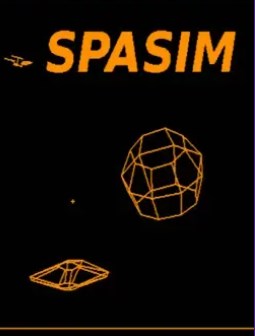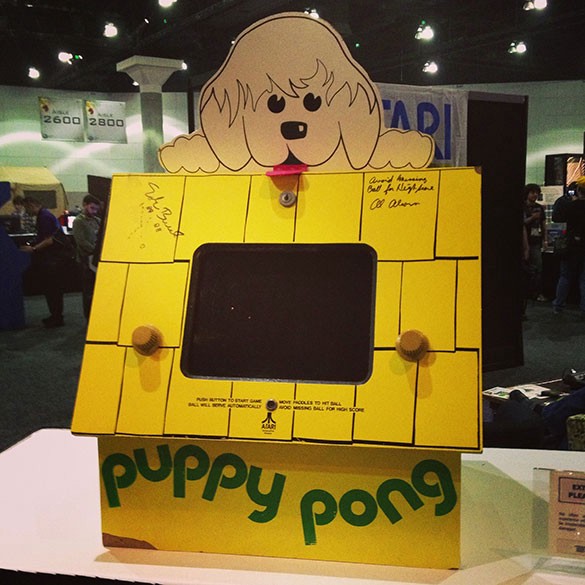Birth of the micros... (1975)
___________________
 |
| PIC: 8800 prototype - not even a working model |
 |
| Kit $397, Assembled $497 |
The Altair 8800 initially sold in kit form (not even assembled yet) for $397 (somewhere in the neighborhood of $2,3
00 in 2024 dollars!). And for that expensive privilege, you'd better be handy with a soldering gun or you run the risk of owning a very expensive doorstop. In fact, the Altair 8800 was much more of an engineering project than a "computer" in the sense of how we think of it today. Even if you managed to assemble, troubleshoot, wire and test the Altair successfully... there wasn't much you could do with it. At least, not yet. The input & output consisted of a row of LED lights on the front panel. Flipping switches up & down, you could "program" your Altair - much like entering binary code into a database. Sound like fun? For those interested in computer technology it was a dream come true, amazing as that sounds to modern sensibilities!
 |
| You "program" it with those up/down switches They represent bits in an 8-byte register... Whoah! |
Even MITS had NO IDEA of how much pent-up demand there was. The MITS company had been taking a beating with strong competition in their former cash-cow market - calculators. They had to borrow heavily to get the Altair created and implemented. It truly was a make or break event for them, and they barely got their prototype computer finished in time for the Popular Mechanics article. In fact, the original prototype of the Altair got lost in shipping on its way to New York from New Mexico (to this day, it has never been found! Now there's a mystery to unravel!). The picture on the cover of Popular Mechanics wasn't even a real Altair -- they faked it to make the article deadline! Gutsy move! But the gamble paid off. Altair needed to sell at least 600-800 machines to get out of debt and stave off bankruptcy. After the article came out, the orders started flowing in and they were soon backed up for months with over 4,000 orders in the queue.
All this when there really wasn't much that could be done with the lowly Altair - at least not initially. Only a front panel of switches for programming, 256k of RAM, and a few lights to interpret and read for output. But the enthusiasm and the possibilities set the hackers to doing what they do best - innovation & improvisation. The S-100 bus on the Altair became a standard feature for implementing add-on products. New memory modules, teletype & other display units, cassette recorders, memory add-ons and more all became additional products that could be purchased. They actually began to make the Altair - well, DO SOMETHING!
 |
| Computers became popular items! |
What most people don't really realize is how dynamic and quickly changing even this early computer industry was. Competition sprang up quickly - and it was fierce. Kit Computers became the new hot product in technology, and major and minor players sprung up in a general free-for-all of ideas, design, and features. Sphere, IMSAI, SWTPC, OSI's Challenger, Sol-20, Jupiter II, Intercolor, Polymorphic, Heathkit, Cromemco, The Digital Group, The Vector-1... need I go on? The point is, it was a fierce, uncharted and unexplored market and nobody had hit on the "magic formula", they just wanted a piece of the action and to be a part of a burgeoning industry.
 |
| One of many 1st-gen micro computers jostling for market share |
Somewhere into the middle of this crazy market of kit computers, and early micros, Steve Wozniak built his own machine. He combined a video display and various other features into a microcomputer of his own design, because it was what He desired to own, but couldn't afford to buy. The guy even wrote his own BASIC language which he would type into his computer (took about 40 minutes) every time he wanted to showcase his machine (because he did not yet have any way to save programs). Then he happily started handing out schematics and shared his designs with members of the Homebrew Computer Club, but Steve Jobs saw an opportunity to make The Woz's computer an actual product, and put a stop to Woz's "freebie" tendencies. But we'll wait until the next post to delve into that chapter of computer history.
 |
| 1975 - the two Steves |
Before I wrap up this post, however, I want to analyze the videogame industry during this period and its tie-ins with the "kit computer" craze of 1975-1977. To be fair, I don't think computer games had much of an impact on this era. Arcade games were not "software-programs" yet, but were solid-state electronics. In 1975, the shift began when Gun Fight was the first arcade game to use a microprocessor (an Intel 8080). But bigger video games news in 1975 was the home version of Pong. This was state-of-the-art home entertainment. While the arcades were exploring other genres like driving and tank games, Pong and its "TV Games" thinking became the major electronic product on the homefront.
The influence of games on technology is most definitely felt, though, if nothing else than to put a pretty picture on the microcomputer screen for a magazine ad. Computer graphics were mostly limited to text or ASCII characters - so even a bitmapped graphic was an impressive feat at this time. There were a few standard games that seemed to appear on every system... like Star Trek, David Ahl's BASIC games, puzzles, word play, and also implementations of traditional card & board games. The graphics on micros were just too limited (if any at all) for much more than these simple games.
However, Pandora's Box had now been opened. The Altair was at the forefront of the new micro-computer industry. They might not yet be powerful or highly useful, but they were programmable and multi-purpose. It felt like a new day was dawning. Soon in this blog we'll take a look at how the strengths of dedicated gaming systems vs. programmable computers each played heavily into the types of games that appeared on the respective systems. And we'll see the constant efforts to improve gaming on both dedicated and programmable machines.
 |
| The IMSAI 8080 - another contendor, especially for business owners. |

















